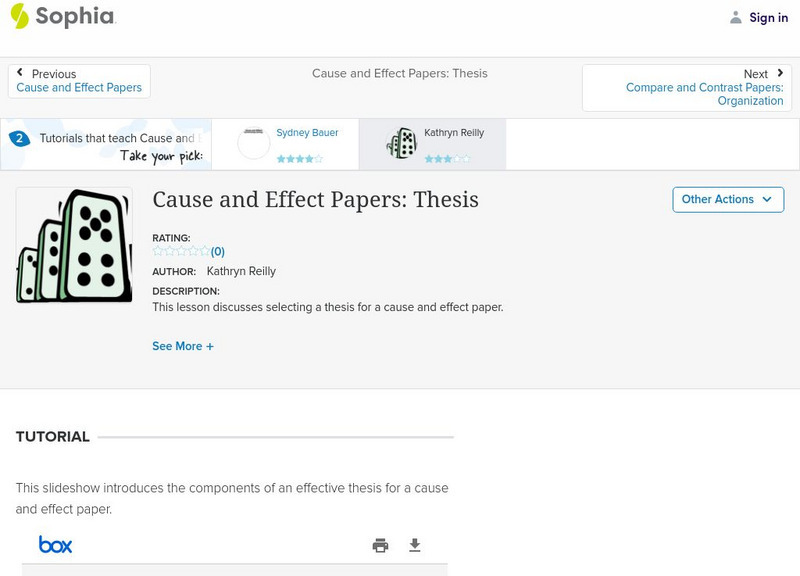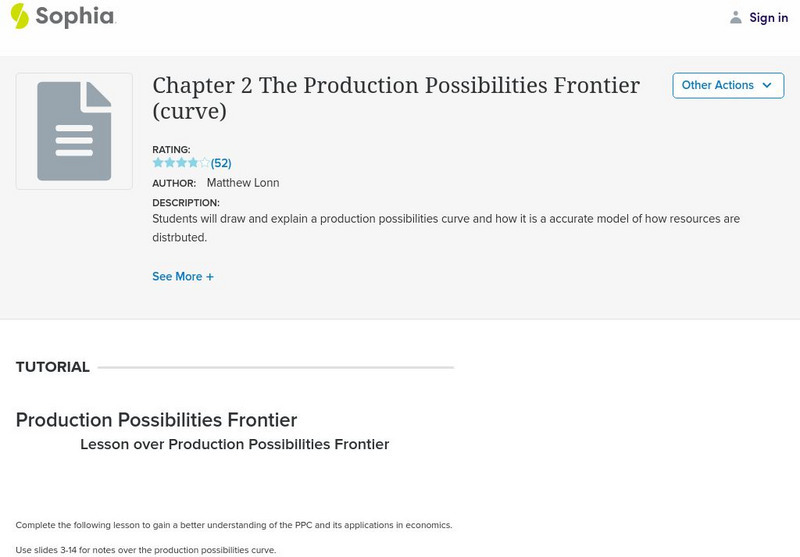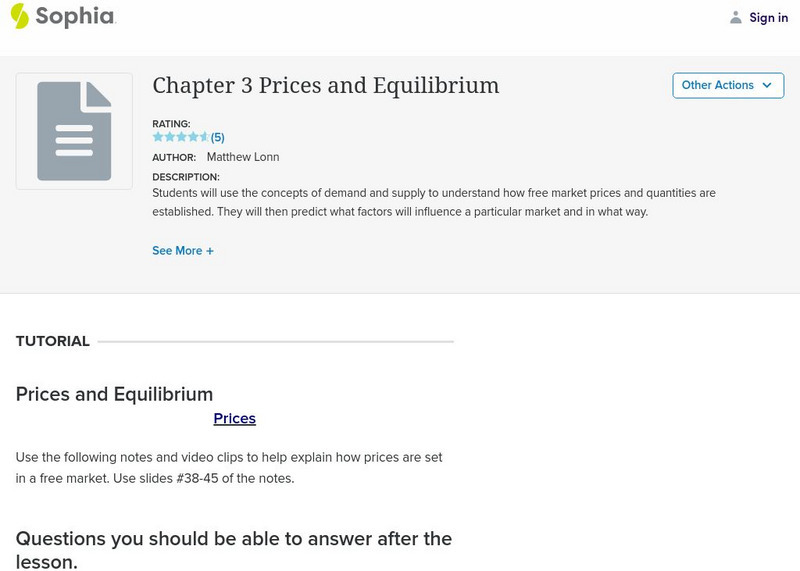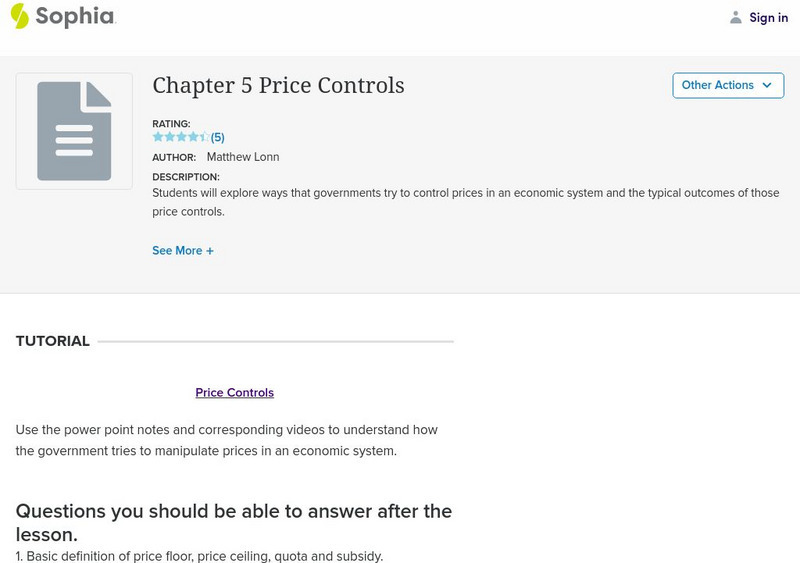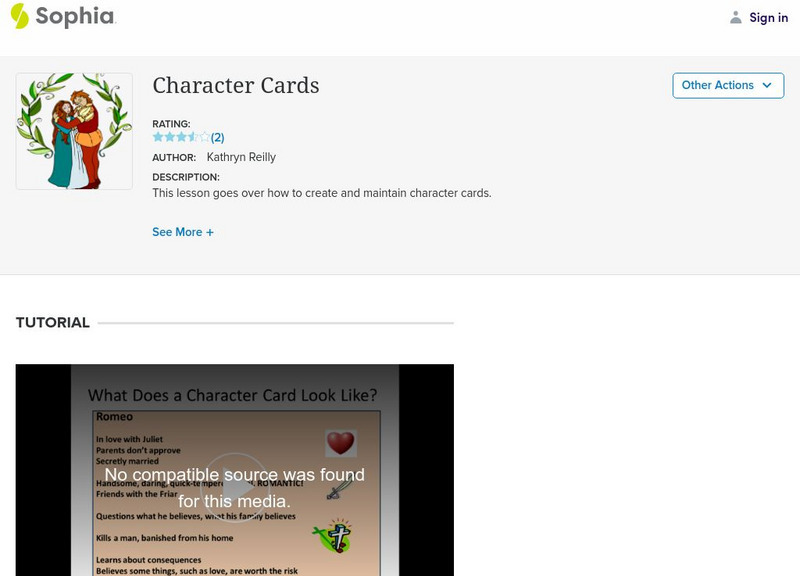Sophia Learning
Sophia: Newton's Second Law: Lesson 3
This lesson introduces Newton's Second Law and explains that force is equal to mass times acceleration. It is 3 of 3 in the series titled "Newton's Second Law."
Sophia Learning
Sophia: Research Sources: Websites
This slideshow lesson focuses on the use of websites for research sources. It gives the pros and cons to using websites as sources and discusses the need to evaluate websites and what to look for.
Sophia Learning
Sophia: Physics: Bill Nye: Eggs Speriment
Created to teach students of the 21st century, SOPHIA is bringing science straight to your fingertips. Become the commander of your own learning experiences as you take part in this density experiment.
Sophia Learning
Sophia: Earth Sciences: Move Mountains
Created to teach students of the 21st century, SOPHIA is bringing the science experiements straight to your fingertips. Learn about tectonic plates will Bill Nye as you take part in this interactive lesson and help make learning permanent!
Sophia Learning
Sophia: Bill Nye: Once in a Mega Moon
Bill Nye explains why the moon appears smaller when it is higher in the sky, and he presents a Home Demo experiment that proves its an illusion. The experiment requires a bright moon on a clear night, a stiff piece of cardboard, and a...
Sophia Learning
Sophia: Space Science: Bill Nye: Orbiting Marbles
Created to teach students of the 21st century, SOPHIA is bringing outer space straight to your fingertips. Become the commander of your own learning experiences as you take part in this interactive experiment.
Sophia Learning
Sophia: Earth Sciences: Twistin' Tornado
Created to teach students of the 21st century, SOPHIA is bringing a tornado straight to your fingertips. Become the commander of your own learning experiences as you take part in this Bill Nye interactive lesson.
Sophia Learning
Sophia: Space Science: Bill Nye: Weightless Clothespin
Created to teach students of the 21st century, SOPHIA is bringing the world of science straight to your fingertips. Become the commander of your own learning experiences as you take part in this interactive experiment.
Sophia Learning
Sophia: Brackets
This slideshow lesson focuses on brackets by providing background information and uses including the following: clarify details, adding emphasis, modifying quoted material, and marking errors in quotations using [sic]. It provides...
Sophia Learning
Sophia: Building Blocks of Language: The Eight Parts of Speech
This tutorial focuses on the 8 parts of speech and how they function in sentences. It offers a YouTube video of students rapping the 8 parts of speech, a slide show of the 8 parts of speech, examples, and how they function in sentences,...
Sophia Learning
Sophia: Calculations: P H, P Oh, [H+], [Oh ]
Created to teach students of the 21st century, SOPHIA is bringing chemistry calculations straight to your fingertips. Become the commander of your own learning experiences as you take part in this interactive lesson.
Sophia Learning
Sophia: Capitalization in Titles
This video lesson focuses on capitalization of titles. It discusses the tradition styles for capitalizing titles for books, magazines, movies, chapters, essays, and articles; it also discusses the more modern APA styles for chapters,...
Sophia Learning
Sophia: Cause and Effect Papers: Thesis
This slideshow lesson focuses on how to write an effective cause and effect thesis; it reviews cause and effect writing, lists signal words for cause and effect papers, explains what is required in the thesis, and provides three examples...
Sophia Learning
Sophia: Cause and Effect Transition Words
This slideshow lesson focuses on cause and effect transition words; it defines and lists the categories of transition words. It discusses when to use cause and effect transition words, provides a list of sample words, and offers sentence...
Sophia Learning
Sophia: Perfect Competition
Through notes and related videos, students gain a basic understanding of market structures and the characteristics of firms that display perfect competition.
Sophia Learning
Sophia: Monopoly
Through a series of resources, this tutorial investigates the characteristics of a monopoly and how to draw a cost analysis graph. Video lessons are provided to reinforce the concept.
Sophia Learning
Sophia: The Production Possibilities Frontier
Through a series of videos and notes, lesson gives students a better understanding of the production possibilities curve and how it applies to economics.
Sophia Learning
Sophia: Concept of Demand
A series of resources provided to teach students the concept of demand and demand curve shifts. After taking notes, students can view two video segments to help clarify the concept.
Sophia Learning
Sophia: Prices and Equilibrium
Through a series of resources, students use the concept of demand and supply to explain how free market prices and quantities are established, define equilibrium, and understand the idea of shortage and surplus.
Sophia Learning
Sophia: Producer and Consumer Surplus
By using notes and supporting videos, tutorial helps students to acquire an understanding of producer and consumer surplus and to be able to calculate it.
Sophia Learning
Sophia: Price Controls
Lesson uses power point notes and related videos to help students understand ways that the government tries to control prices in an economic system, and what the expected results are.
Sophia Learning
Sophia: Character Cards
This video lesson focuses on using character cards as a reading strategy. It defines and gives the purpose of character cards, explains the type of information to put on the front and the back of the card and how to maintain the card. It...
Sophia Learning
Sophia: Science Tutorial: Matter
Created to teach students of the 21st century, SOPHIA is bringing matter straight to your fingertips. Become the commander of your own learning experiences as you take part in this interactive tutorial. [1:02]
Sophia Learning
Sophia: Characterization Through Description
This slideshow focuses on authors defining characters through description such as features, dress, mannerisms, emotions, and objects. It provides several examples from Bram Stoker's "Dracula."












![Sophia: Calculations: P H, P Oh, [H+], [Oh ] Unit Plan Sophia: Calculations: P H, P Oh, [H+], [Oh ] Unit Plan](https://content.lessonplanet.com/knovation/original/218428-81e36f3b80bf76c44b558309eac1c9b2.jpg?1661242989)

